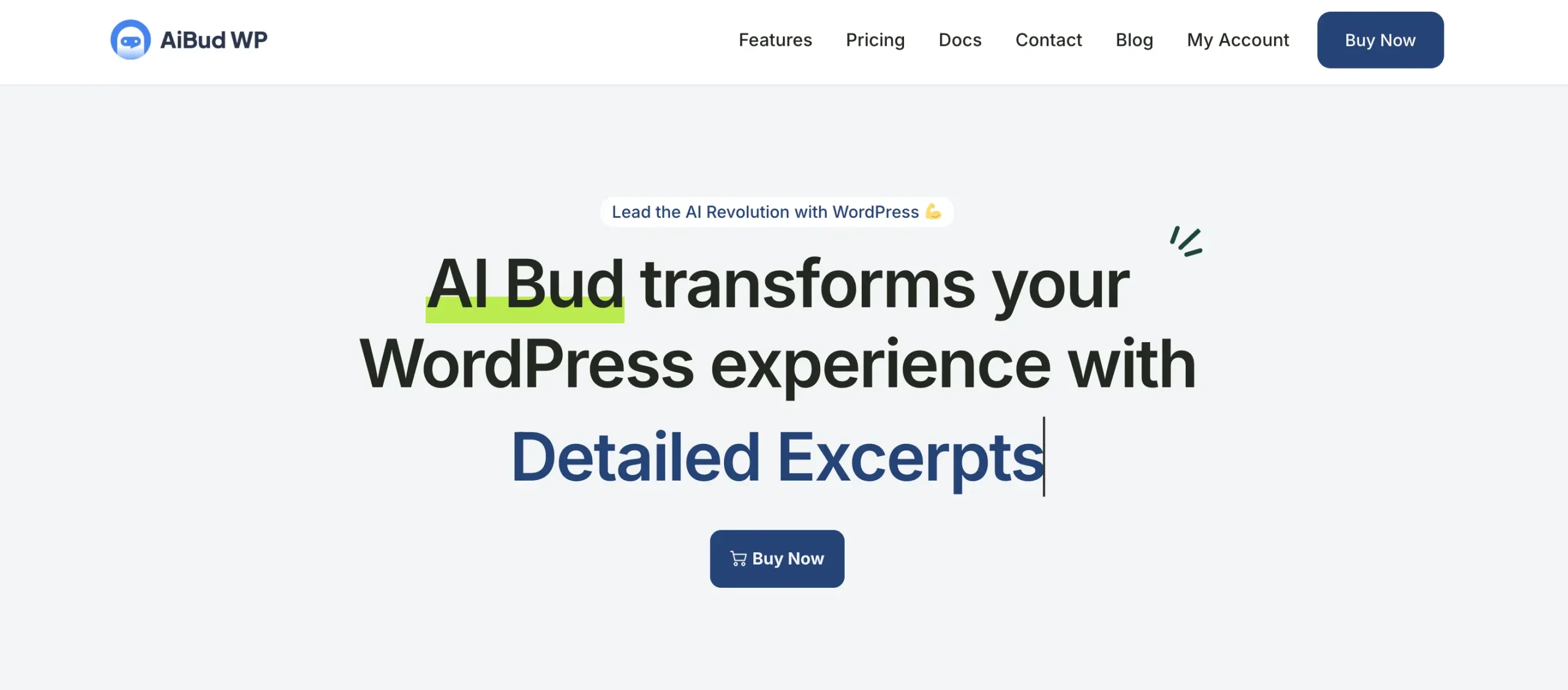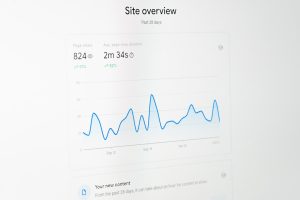
AI has become table stakes for content teams, but most workflows still leak time: you prompt in one app, paste into WordPress, fix formatting, hunt for images, draft SEO titles/excerpts, then repeat across a dozen posts. AI Bud WP moves the core AI steps into the CMS itself so you can generate content, bulk-create posts from topic lists, launch a site chatbot trained on your docs, make simple images, and standardize SEO—all without tab-hopping.
If you’re measuring output velocity, editorial consistency, and support deflection, this plugin is a compelling “one install = multiple wins.” Prefer to kick the tires first? There’s a free build on WordPress.org: AI Bud WP. When you need the complete toolset and priority support, go PRO: AI Bud WP.

TL;DR (Should you use it?)
If your team publishes regularly and feels the copy-paste drag, AI Bud WP is an immediate quality-of-life upgrade. It’s not a replacement for editors, but it compresses routine steps—drafting sections, spinning up bulk drafts, proposing SEO titles/excerpts, generating quick visuals, and answering repeat visitor questions via chatbot. The result is faster shipping and more consistent outputs.
Rating: 4.5 / 5
Best for: blogs, niche/affiliate sites, SMB marketing teams, agencies managing multiple WordPress installs
Skip if: you rarely publish, don’t use WordPress as your primary CMS, or prefer writing entirely outside the editor
Core features (what you actually get)
In-editor content generation
Inside Gutenberg or Classic Editor, generate intros, outlines, H2/H3 sections, FAQs, pros/cons, and conclusions. You set constraints (tone, length, angle), it fills the blanks. Treat outputs as structured drafts—editors add examples, screenshots, and links.
Bulk Content Builder
Paste a topic list, optionally with a one-line angle per topic, then create multiple drafts in one shot. Great for seasonal sprints (Black Friday), resource hubs, and long-tail clusters. Assign drafts to authors for polish.
Smart chatbot (on-site)
Add a front-end chat widget that answers common questions. Seed it with your docs, FAQs, and policies; define guardrails for what it should or shouldn’t answer. Chat logs reveal content gaps you can convert into posts.
Fine-tuning / knowledge setup
Feed Q&A sets and datasets so the bot reflects your brand and facts. This keeps answers on-message and reduces hallucinations.
Image generation
Create simple header/inline images from the dashboard—handy when stock doesn’t fit. Use as placeholders and replace with branded visuals as needed.
Comment generator
Speed up comment replies and moderation; always keep an editorial pass.
SEO helpers
Generate multiple options for SEO titles and excerpts so your archive stays consistent and click-worthy.
What it’s like to use (day 1 to week 1)
Installation is straightforward. After connecting your AI provider keys and setting defaults (tone, length), you can:
-
Draft directly in the editor by expanding each subheading (e.g., “write 130–160 words, neutral tone, 1 concrete example”).
-
Paste a spreadsheet of topics into Bulk Content Builder and spin up 10–30 drafts in minutes.
-
Launch the chatbot, upload core docs (shipping, pricing, return policy), and enable logs.
-
Generate quick header images for posts that need a visual.
-
Propose 3–5 SEO titles/excerpts per post and pick the best.
The biggest practical win is friction reduction: fewer jumps between tools means more publishing momentum.
Performance & impact (what to measure)
-
Output velocity: drafts per week before vs after adoption.
-
Editorial time saved: time to first draft; time to publish after editor pass.
-
SEO consistency: title/excerpt compliance (length, format) across a sample of posts.
-
Support deflection: % of visitor questions resolved by the chatbot without human handoff.
-
Content gaps: top new questions from chat logs turn into high-intent articles.
Teams typically report a noticeable bump in “time-to-first-draft” and a reduction in the chaotic variance of titles/excerpts across authors.
Pros / Cons
Pros
-
Everything in one place: content, images, SEO, and chatbot live in WordPress—less context switching.
-
Bulk drafts at scale: perfect for campaigns and long-tail clusters.
-
SEO hygiene built-in: consistent titles/excerpts improve crawl clarity and CTR.
-
Chat logs = research: real visitor questions surface content opportunities fast.
-
Role controls: restrict AI actions to specific roles if you need governance.
Cons
-
Still needs editors: treat outputs as drafts; fact-check and add proof/examples.
-
Prompts drive outcomes: weak prompts = generic copy; you’ll want a shared prompt library.
-
Image generation is pragmatic, not artistic: good for placeholders, not branded hero art.
-
Chatbot guardrails required: without knowledge/limits, it can answer beyond scope.
Who will love it (and who won’t)
Great fit: publishers producing multiple posts per week; SMBs that need on-site chat without a separate platform; agencies wanting repeatable workflows across sites.
Not ideal: teams deeply invested in external headless flows; sites that publish rarely; organizations requiring highly specialized creative assets beyond simple AI images.
Setup guide (15 minutes to first value)
-
Install & connect your provider keys; set a default voice (e.g., “clear, concise, no hype”).
-
Create a prompt library shared across authors (section length, tone, example count).
-
Draft inside the editor: write H2/H3s first, then expand each with your prompt.
-
Bulk Content Builder: paste topic lines like “How to set up live chat [support workflow angle].” Include angles in brackets for better focus.
-
Chatbot: seed knowledge with FAQs/policies; set a fallback (“We can’t advise on X; here’s the contact form”).
-
SEO pass: generate options for titles/excerpts; adopt a standard pattern (benefit + keyword + qualifier).
-
Images: create simple headers for posts lacking visuals; plan to replace with screenshots/brand art.
Real workflows to steal
Campaign sprint (2 weeks):
-
Day 1–2: Bulk-generate 20 topic drafts (each with a bracketed angle).
-
Day 3–5: Editor pass + screenshots; run SEO helper.
-
Week 2: Publish cadence; chatbot trained on the new resource hub; watch chat logs for follow-up posts.
Support deflection:
-
Convert your 30 most common tickets into Q&A.
-
Feed them to the bot; set escalation rules.
-
Review weekly logs, add missing answers, and turn high-volume questions into articles.
Onboarding junior authors:
-
Give them a style card (voice, sentence length, examples).
-
Use in-editor generation for sections.
-
Editors add internal links, citations, and proof (data, screenshots).
Pricing (as listed)
-
Single site: $49.99/year
-
Five sites: $79.99/year
-
Fifty sites: $299.99/year
Licenses include one year of updates and support. For agencies or multi-property teams, the five-site tier usually hits the ROI sweet spot.
Best practices (so quality stays high)
-
Always fact-check anything non-obvious; never ship invented stats.
-
Enforce voice: keep a reusable “style primer” in your prompts.
-
Ground claims: cite your docs or credible sources when making assertions.
-
Limit images: one feature + one supporting visual often beats a collage.
-
Document AI use: note where AI assisted in your internal changelog.
Alternatives and how AI Bud WP compares
-
Do it outside WP: flexible, but constant copy-paste and formatting pain.
-
Standalone chatbot SaaS: powerful, yet another platform and widget to manage.
-
Generic content AI plugins: often lack bulk drafting, SEO standardization, or knowledge-trained chat.
AI Bud WP’s advantage is consolidation: fewer tools to wrangle, a tighter editorial loop, and lower friction for shipping.
Verdict
AI Bud WP won’t replace editors—but it will remove a lot of glue work between ideation and publish. For teams inside WordPress that want higher output, more consistent SEO basics, and a pragmatic on-site chatbot, it’s a strong pick. Start by standardizing prompts, run a two-week sprint with Bulk Content Builder, and keep an eye on chat logs for content ideas. You’ll feel the speed-up in week one.
Score: 4.5 / 5 — Recommended for WordPress-first teams that value speed and consistency.






